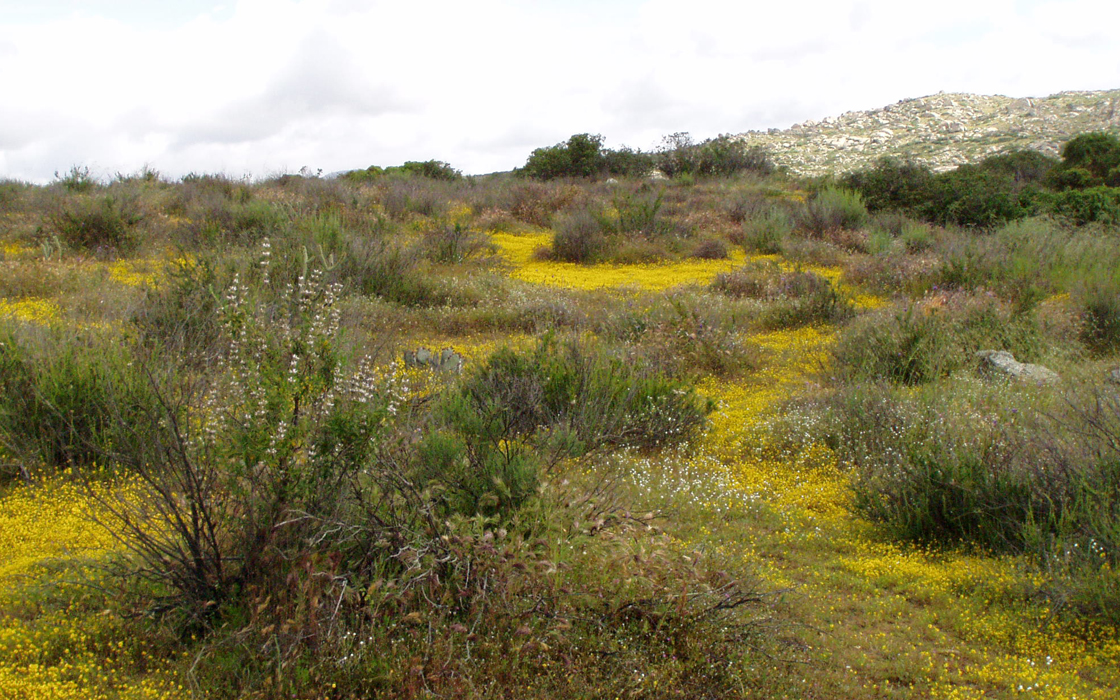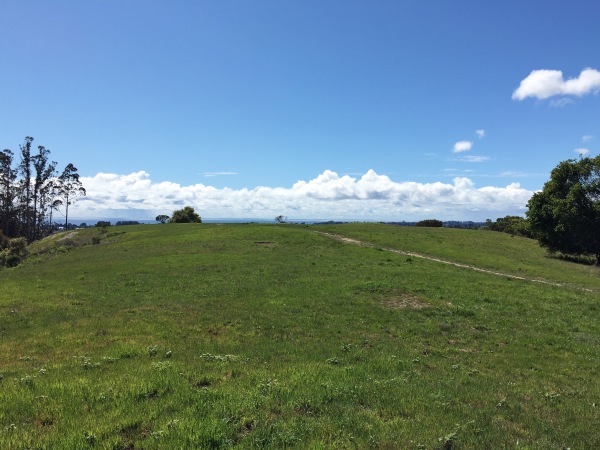Endangered beetle digs in on CNLM preserve
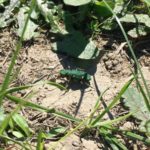 As part of ongoing recovery efforts, 43 Ohlone tiger beetles (Cincidela ohlone) were released over two days in March 2020 at CNLM’s Santa Cruz Gardens Preserve, near Soquel in Santa Cruz County. Ohlone tiger beetles are predatory, colorful, endemic to Santa Cruz County, and federally endangered. Over nine acres of the 56-acre preserve is coastal terrace prairie habitat and historically hosted a population of Ohlone tiger beetles—making it a good candidate site for re-establishing a population of this species.
As part of ongoing recovery efforts, 43 Ohlone tiger beetles (Cincidela ohlone) were released over two days in March 2020 at CNLM’s Santa Cruz Gardens Preserve, near Soquel in Santa Cruz County. Ohlone tiger beetles are predatory, colorful, endemic to Santa Cruz County, and federally endangered. Over nine acres of the 56-acre preserve is coastal terrace prairie habitat and historically hosted a population of Ohlone tiger beetles—making it a good candidate site for re-establishing a population of this species.
L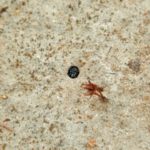 eading up to the translocation, CNLM and David Laabs of Biosearch Environmental Consulting, have been working to restore coastal prairie habitat for the beetle. Preparations involved mowing, raking, weeding, and hand-pulling vegetation with some very focused light scraping to establish several patches of mostly bare earth, required for Ohlone tiger beetles to reproduce and thrive. The translocated animals were collected by experts from three locations in the county where their populations are stable. The team has been continuously monitoring the beetles since the release and reported observations of hunting and mating within days. Several larval burrows have been identified,
eading up to the translocation, CNLM and David Laabs of Biosearch Environmental Consulting, have been working to restore coastal prairie habitat for the beetle. Preparations involved mowing, raking, weeding, and hand-pulling vegetation with some very focused light scraping to establish several patches of mostly bare earth, required for Ohlone tiger beetles to reproduce and thrive. The translocated animals were collected by experts from three locations in the county where their populations are stable. The team has been continuously monitoring the beetles since the release and reported observations of hunting and mating within days. Several larval burrows have been identified, 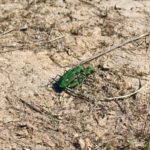 demonstrating successful breeding at the release site. This is the first time that translocation has been attempted for the Ohlone tiger beetle, although larval translocation has been performed successfully for other tiger beetle species. The US Fish and Wildlife Service (USFWS) intends to release additional adults to the Preserve in 2021, and it is hoped that the release can be a model for re-introductions to other previously occupied sites. CNLM holds a conservation easement and perpetual management agreement for the Preserve, thereby adding to the protection and likelihood of success of this re-introduction. To read more about CNLM management of this Preserve, visit the Santa Cruz Gardens Preserve webpage.
demonstrating successful breeding at the release site. This is the first time that translocation has been attempted for the Ohlone tiger beetle, although larval translocation has been performed successfully for other tiger beetle species. The US Fish and Wildlife Service (USFWS) intends to release additional adults to the Preserve in 2021, and it is hoped that the release can be a model for re-introductions to other previously occupied sites. CNLM holds a conservation easement and perpetual management agreement for the Preserve, thereby adding to the protection and likelihood of success of this re-introduction. To read more about CNLM management of this Preserve, visit the Santa Cruz Gardens Preserve webpage.
Partners for this project include Dr. Richard Arnold and Dr. Barry Knisley, California State Parks, the Land Trust of Santa Cruz County, the Resource Conservation District of Santa Cruz County, USFWS, Center for Biological Diversity, City of Santa Cruz, California Department of Fish and Wildlife, and the University of California, Santa Cruz.



